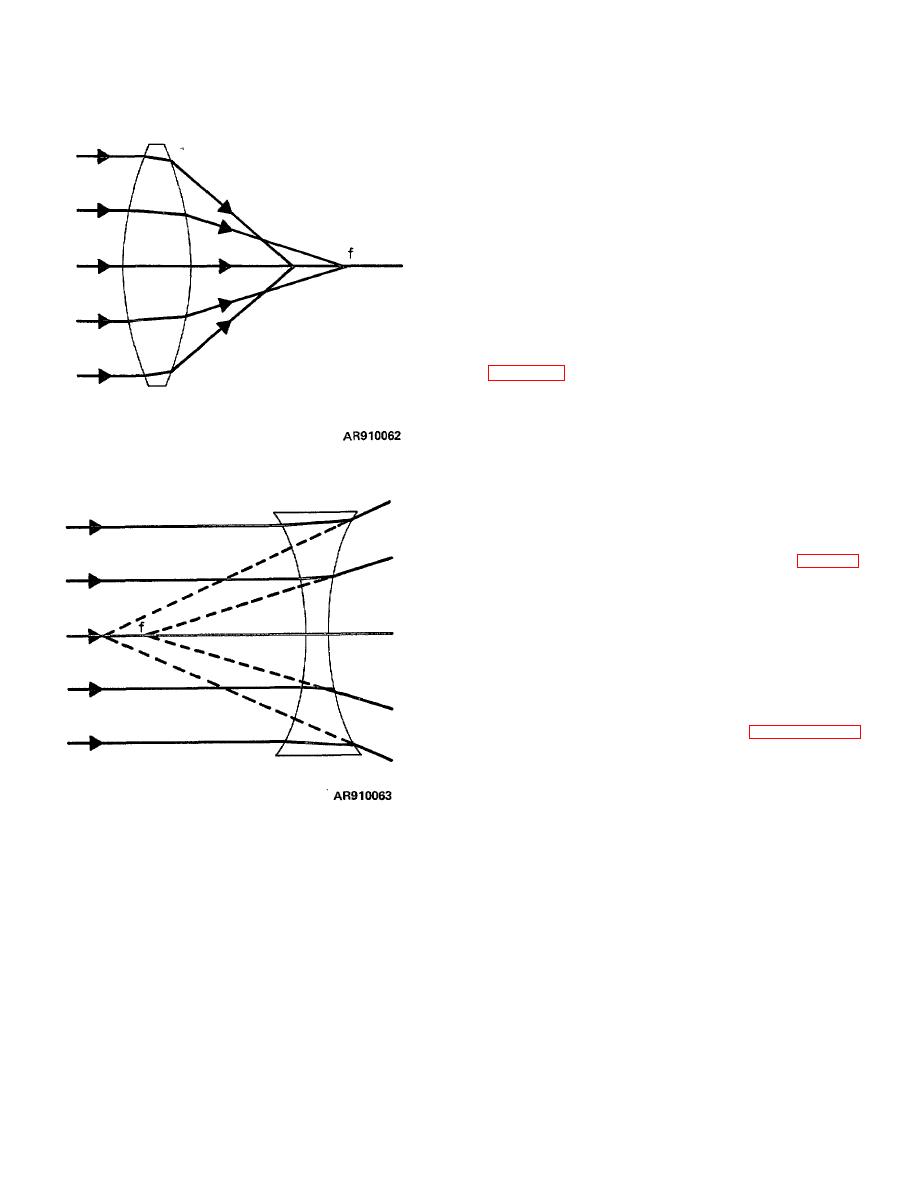 |
|||
|
|
|||
|
Page Title:
Figure 2-56. Spherical aberration of convergent lens. |
|
||
| ||||||||||
|
|
 TM 9-258
b. The thickness of a lens and its focal length
influence the amount of spherical aberration. Spherical
aberration is least in thin lenses of long focal length.
c. If the convergent lens were ground with
constantly flattening curves to the edge instead of being
ground with each refracting surface as a true portion of a
sphere, the rays would be caused to cross the axis at
nearly a single point and a sharp image would result.
Such lenses, however, would be too difficult and costly to
manufacture and would be correct for only one distance
from the object. Instead, two other methods are utilized
either singly or together which satisfactorily eliminate
spherical aberration (f and g below).
d. Hourglass distortion, barrel distortion, and
curvature of image all result from spherical aberration
way 'usually will introduce distortion into the system.
This is of interest, therefore, to the instrument repairman.
e. In a lens system such as a complex camera
objective or in a single lens used at a wide angle,
spherical aberration can be reduced at the expense of
Figure 2-56. Spherical aberration of convergent lens.
light intensity by using an aperture stop, field stop, or
diaphragm. The central portion of a lens is most free of
spherical aberration. Tests of a lens will show how much
of the area around the axis may be safely used to form a
sharp image. The practice is to mask out all rays
passing through the lens beyond this circle (A, fig 2-57).
The mask used for this purpose is led an aperture stop.
It is a flat ring or diaphragm of metal or other opaque
material covering the outer portion of the lens. It stops
the rays from entering the margin of the lens but, as it
cuts down the effective size of the lens, it limits the
amount of light passing through the lens. Obviously, in
general, it would be cheaper to manufacture a 4maller
lens rather than to make a large lens and a stop for
masking out marginal rays. Diaphragms or stops have
other uses. See diaphragms or stops in paragraph 4-10.
Figure 2-57. Spherical aberration of divergent lens.
2-43
|
|
Privacy Statement - Press Release - Copyright Information. - Contact Us |